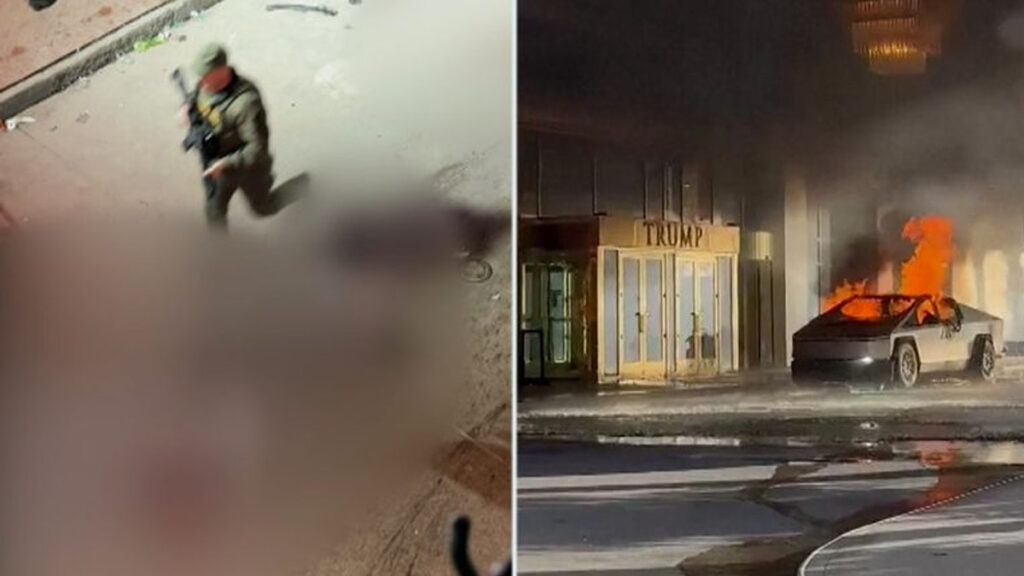In the aftermath of two devastating terrorist attacks—one in New Orleans on Bourbon Street and the other involving a Tesla Cybertruck explosion in Las Vegas—investigators are now exploring a possible connection: both suspects served at the same U.S. military base during their time in the armed forces.
The Suspects: Who Were They?
Shamsud-Din Jabbar (New Orleans) Shamsud-Din Jabbar, a 42-year-old former Army human resources and IT specialist, served from 2007 to 2015 and later in the Army Reserve until 2020. Jabbar had been deployed to Afghanistan between 2009 and 2010, where he reportedly developed advanced technical expertise. After leaving the military, he settled in Houston, Texas, working as a real estate agent.
On New Year’s Day, Jabbar drove a rented Ford F-150 electric pickup truck into a crowded Bourbon Street, killing 15 and injuring dozens before being fatally shot by police. Authorities recovered an ISIS flag from his vehicle and several improvised explosive devices (IEDs). Hours before the attack, Jabbar posted ISIS-inspired videos online, openly expressing his intent to kill.
Matthew Livelsberger (Las Vegas) The Las Vegas suspect, 37-year-old Matthew Livelsberger from Colorado Springs, was reportedly responsible for the explosion of a Tesla Cybertruck outside a hotel owned by President-elect Donald Trump. Livelsberger, who had served as a logistics specialist in the military, rented the Cybertruck through a car-sharing app. While Livelsberger’s motives remain less clear than Jabbar’s, investigators noted similarities in the suspects’ behaviors and methodologies.
The Military Connection
Both men served at Fort Leonard Wood, a U.S. Army base in Missouri, though at slightly different times. Fort Leonard Wood is a hub for military police, chemical, and engineering training. While officials have not revealed whether the two suspects knew each other personally, the shared connection to the same base raises questions about possible radicalization or shared extremist influences during or after their service.
The military has faced scrutiny before for its vulnerability to extremist infiltration. Analysts are investigating whether either suspect exhibited warning signs during their time in service or if they maintained connections after leaving the military.
Are the Attacks Connected?
At this stage, investigators remain cautious about confirming a direct operational link between the New Orleans attack and the Las Vegas explosion. President Biden acknowledged the similarities but emphasized that no conclusive evidence currently ties the two incidents together.
However, the ISIS propaganda materials recovered from Jabbar’s vehicle and the sophisticated explosive device used in Las Vegas suggest advanced planning and possible coordination. Investigators are also focusing on the rental histories of both vehicles, suspect communication records, and financial transactions in the months leading up to the attacks.
The FBI has launched multi-state investigations, with search warrants executed in Texas, Louisiana, and Nevada. Authorities are actively hunting for possible accomplices, with law enforcement officials warning that neither suspect acted entirely alone.
These two attacks—one chaotic and overt in a crowded celebration zone, the other precise and explosive in a high-profile urban area—have heightened fears of a coordinated terror network operating on U.S. soil.
PBP Editor: This story will quickly be overtaken by events, but it is interesting the links that are unfolding. I am getting a sinking feeling in the pit of my stomach that this is the beginning of a long and tragic pattern.
